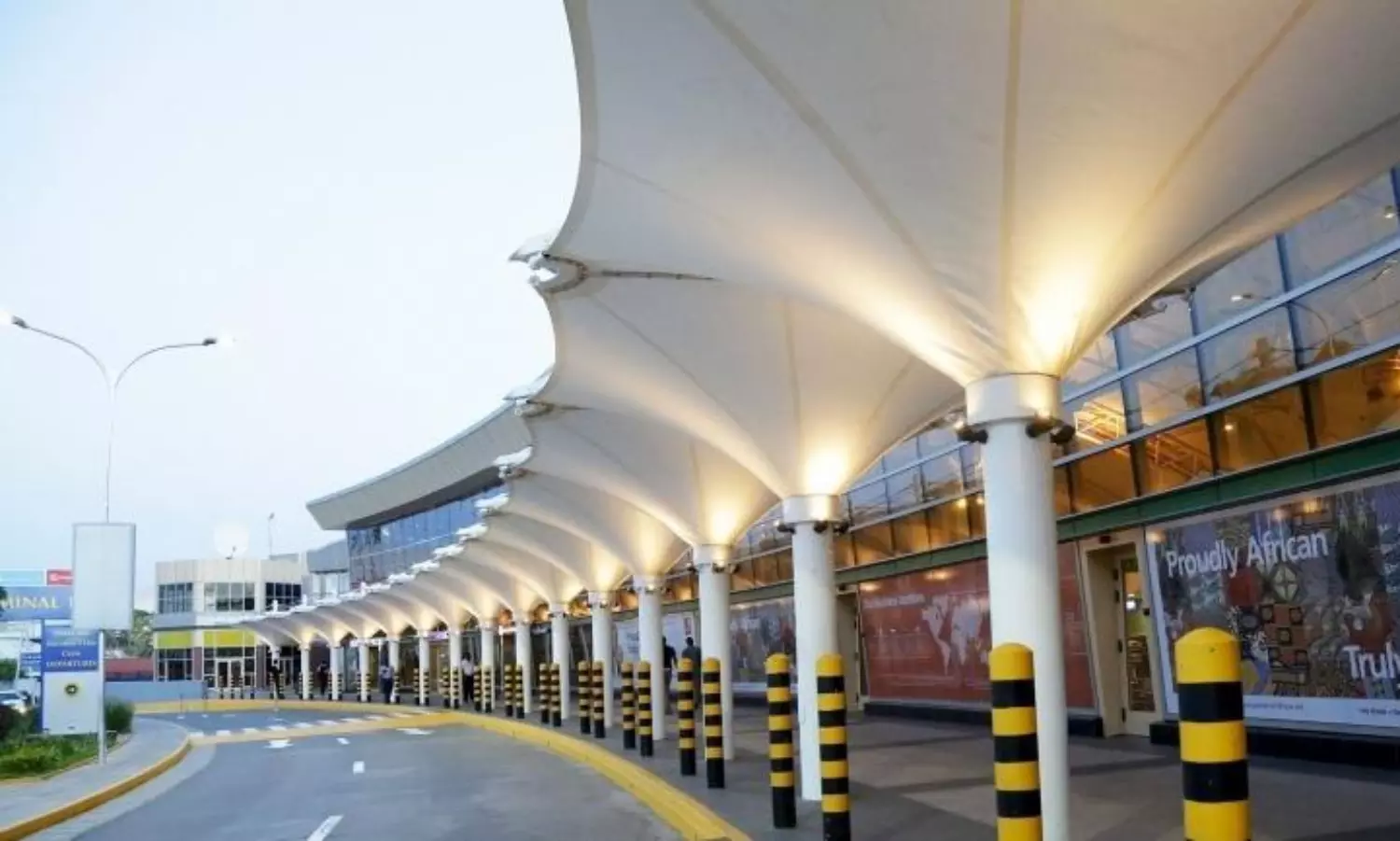Kenyan Govt.: JKIA expansion plan under scrutiny, airport not for sale
Kenya assures the public that JKIA is not for sale amid critical infrastructure investments proposed by Adani Airport Holdings Limited.

Numerous incidents like flight diversions due to runway blockage because of the engine failure of a cargo aircraft in 2023 and roof leakages, among others, indicate that Jomo Kenyatta International Airport (JKIA) in Nairobi, urgently requires infrastructure investments, including building a second runway. Adani Airport Holdings Limited (AAHL) has proposed significant investments to address this need, including building a new terminal and a second runway. However, ongoing protests in Kenya have complicated the situation.
To prevent further complications and potential public outrage related to the sale of JKIA, the Kenyan government has issued a circular signed by Musalia Mudavadi, Prime Cabinet Secretary of Kenya, with an assurance statement regarding the Privately Initiated Proposal (PIP) for JKIA. In the document, the government of Kenya emphasised that JKIA is a strategic national asset and is not for sale. However, the government circular also argues the need for such an injection of external funding to support the country's aviation infrastructure.
The government recognised the urgent need for infrastructural development at JKIA to accommodate the projected growth in passenger and cargo volumes. The circular, released earlier today, highlights that the airport is 10 years behind its development schedule according to its long-term masterplan and is trailing behind its regional competitors in terms of infrastructure quality and technology.
The document highlights several issues at the airport, such as leaking roofs causing embarrassment, power outages disrupting operations, insufficient parking, outdated passenger terminals, and inefficient baggage and cargo handling systems. These issues underscore the urgent need to upgrade the airport infrastructure. According to the Cabinet-approved National Aviation Policy and the JKIA Medium Term Investment Plan, the airport requires a new passenger terminal building, refurbishment of existing terminals, construction of a second runway, and improved cargo handling facilities.
With a goal to modernise JKIA and expand its capabilities, the government has considered various financing options, as the projected passenger number throughout the next 30 years is expected to grow to about 30.5 million. On the other hand, the circular also mentioned that “the proposed expansion of JKIA is estimated to cost $2 billion (KShs 260 billion), a sum that the Government of Kenya is constrained to fund due to the current tight fiscal situation.”
According to the circular, Kenya's public debt as a percentage of GDP has increased to 69.7% (Ksh 11.2 trillion) from 46% in 2010. Currently, the present value of debt to GDP is 67.2%. Additionally, debt service payment is equivalent to 63% of ordinary revenue. The government of Kenya stated, "Given this tight fiscal space, the government, in the Budget Policy Statement 2024, indicated that it intends to make additional infrastructure investments by leveraging on the private sector, through PPPs."
As a result, “All financial options have therefore sought to preserve the nature of JKIA as a strategic national asset that stimulates Kenya’s economic growth and social transformation. In this quest, the government categorically emphasised that JKIA is not for sale. Furthermore, job security and full conformity with Kenyan Law with regard to labour issues shall be upheld.” In the circular, the government not only highlights the dire need for investment in the modernisation of JKIA, it also acknowledges the Privately Initiated Proposal (PIP) initiated by the Indian conglomerate AAHL in March 2024.
AAHL has proposed constructing a second runway, building new passenger terminal buildings, and renovating existing terminals. They also plan to improve airside pavement, add new taxiways, and develop facilities such as hotels, offices, and convention centres. AAHL’s investment will significantly enhance JKIA's operational capacity and efficiency, positioning it as a premier regional hub. The investment is expected to boost Kenya's GDP by an estimated $3.2 billion, fostering trade, tourism, and commerce, and supporting over 257,000 jobs, thus driving overall economic growth. However, this comes at a cost.
Under the 'Build, Operate and Transfer' model of the PPP deal for a tenure of 30 years, while the ownership will remain with Kenya Airports Authority (KAA), assets developed through capital expenditure by AAHL will be transferred to KAA at the expiry of the concession term at a value determined and agreed upon by both parties. This value shall be structured to grant the proponent an equity IRR (Internal Rate of Return) of 18%, which, according to industry standards, is on the higher side. As a part of this deal, AAHL will also receive an equity IRR of 18% on aeronautical business, including the entire capex incurred by the airport.
To clarify Kenyan citizens, the government mentioned that the PIP Act allows private investors to submit PIPs for investment in national infrastructure priority projects. The Kenyan Government is currently reviewing the proposal in accordance with the PPP Act. Control checks will include value-for-money assessment, stakeholder engagement, approval from the National Treasury, clearance by the Attorney General, Cabinet approval, and, if necessary, approval by Parliament before any agreement can be signed.
The Government of Kenya also added, “In response to concerns raised, we reaffirm that the proposed expansion and modernisation of JKIA will be conducted in strict adherence to our Constitution and, specifically, in accordance with the legal frameworks established under the PPP Act.”


